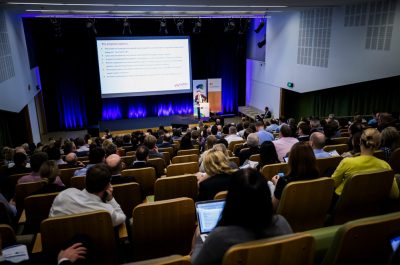Can’t we all just get along?
While summer is fast approaching, the politics of energy still burns fiercely. Without a ceasefire, the prospects for Australia’s energy mix, system security and the effect on markets will remain in limbo – coming at a cost for customers.
However, the challenge is not confined to Australia, it is a global conversation. Utilities, grid operators and regulators in the United States are also managing the transition to a more diverse generation fleet to strike the balance of supporting the evolution of competitive wholesale electricity markets, integrating large amounts of clean energy while keeping customers’ costs low.
Diversity rules
Earlier this week, the Chair of the Australian Energy Market Commission (AEMC), John Pierce announced new rules “designed to provide confidence in the security of the system” as more non-synchronous, lower emission generators like wind and solar come in, and synchronous generators like coal retire. On the same day the AEMC released further rule changes proposed by the Australian Energy Market Operator (AEMO) which look to change the technical requirements for equipment connecting to the power system. AEMO is concerned that the security of the power system may be impacted if current and future applications for connection are processed on the basis of the current access standards.
Last week the AEMC discussion paper on Strategic Priorities recognised that the inclusion of a more diverse generation mix is a core challenge for the market, noting that changing cost structures of new and thermal generators, as well as government policies, is driving the move toward non-synchronous, intermittent generation:
Given these changes, coordinating the generation and consumption of electricity is becoming more complex and will require new approaches to maintain system security and reliability of supply.
AEMO’s Advice to the Commonwealth Government on dispatchable capability recommended a series of short term measures to address insufficient investment in flexible dispatchable resources to maintain the defined target level of supply reliability. AEMO notes that over the past decade, 5,199 megawatts (MW) of baseload generation has retired, and replaced with only 240 MW of coal plant expansion. The retired generation has instead been replaced by a wide diversity of different types of generation fuel types including wind, gas, hydro, large scale solar, liquid fuel and other sources such as biomass.
The Grattan Institute’s report on the long term future of the National Electricity Market (NEM) noted the trend toward an increased diverse mix of fuel sources:
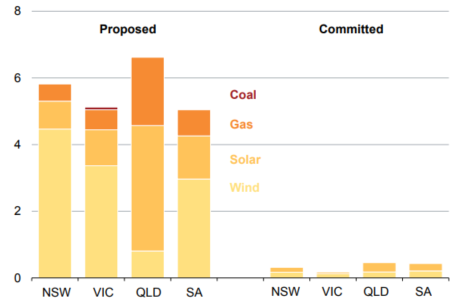
Grattan’s report acknowledges that the market is now signaling the need for new investment to meet tight supply, expected future closures and higher price markets. It also recognises that in “this messy environment” we are currently in, “governments have shown an appetite to invest in generation and solar themselves” particularly in dispatchable generation. Grattan notes that this type of government intervention “may undermine the operation of the NEM and deter private investors”.
Australia is not the only country facing this level of uncertainty. What can we learn from global approaches to “diversity inclusion”?
Global insights
Judy Chang, a principal at the Brattle Group’s Boston office, recently met with Energy Networks Australia to discuss how developments in the US and globally are changing the way that power systems are being planned and operated.
Ms Chang noted that in the US, utilities, grid operators and regulators are also in the midst of managing the transition to a more diverse generation fleet with potential renewable energy resources not located (or locatable) to existing grid infrastructure and the type of generation varying by region (as shown in the charts below). The US is working to strike the balance of supporting the evolution of competitive wholesale electricity markets, integrating large amounts of clean energy needed to support customers’ needs and policymakers’ requirements, while keeping customers’ costs low.
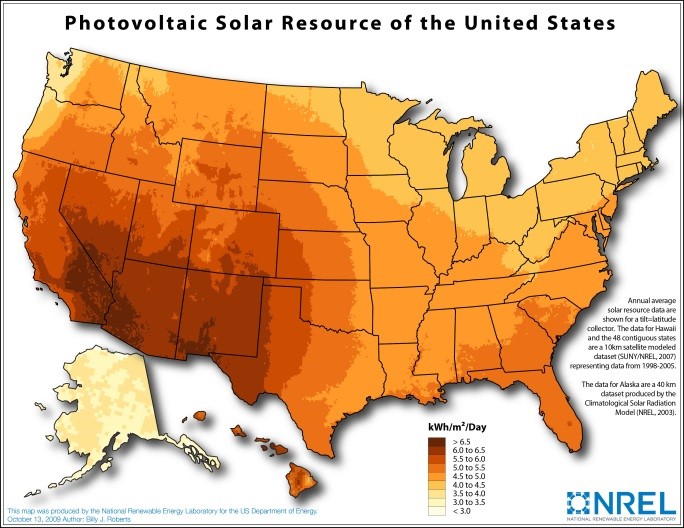
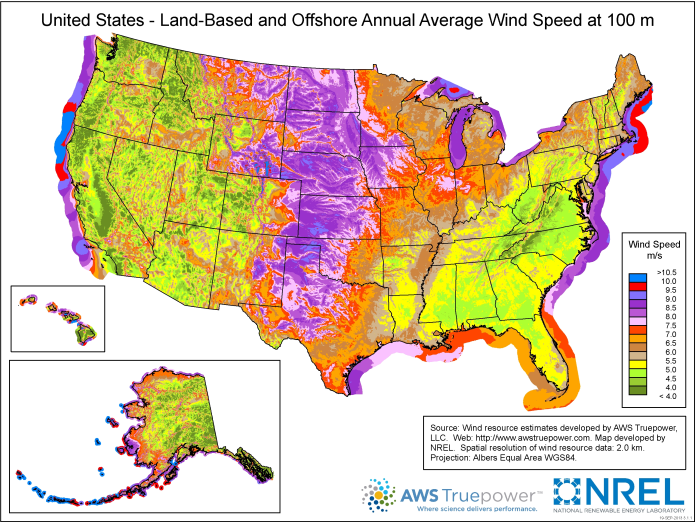
Source: National Renewable Energy Lab (NREL)
This regional diversification of resources is posing challenges to traditional planning arrangements for interconnection between the different markets across regions. However as Ms Chang notes, regional diversification of resources (and customer use) – if planned well – reduces the investment and balancing cost in a future with high levels of intermittent resources. This is illustrated in the figure below, which shows how regional diversity can be integrated to create a more balanced resource mix.
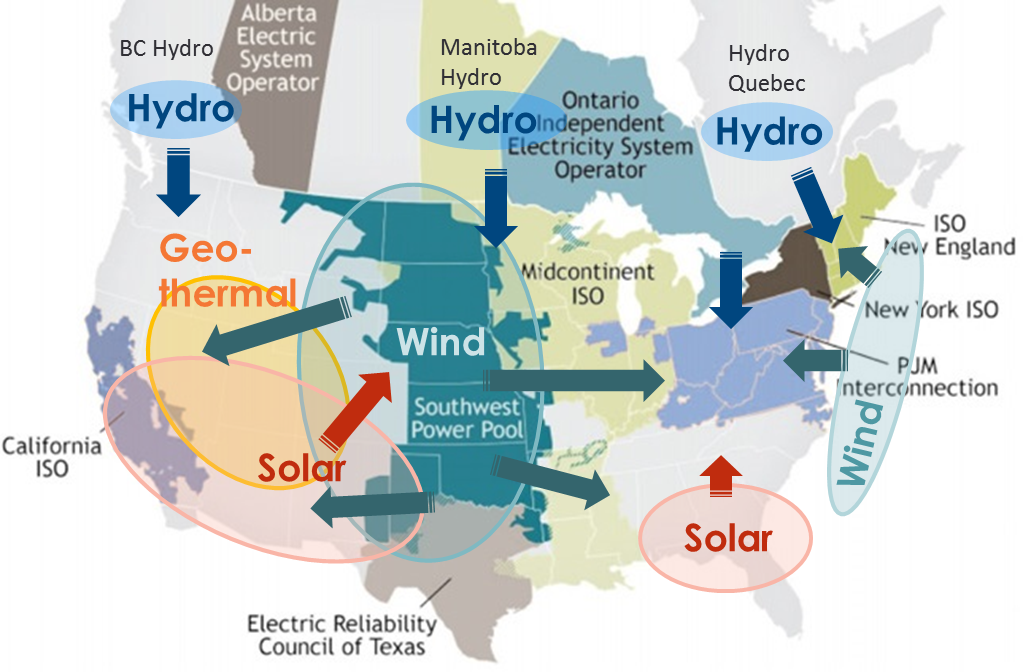
Resource Diversity across the United States. Source:Brattle
Australia’s future energy mix
Australia has an abundance of renewable resource potential, with similar challenges to the US and other countries that the resource potential is diverse and commonly not located close to existing grid infrastructure. ARENA’s recent report on Australia’s Red Hot Solar Future reproduced the World Bank’s Global Solar Atlas recognising Australia’s unique position with the highest rate of concentrated solar energy in the world.
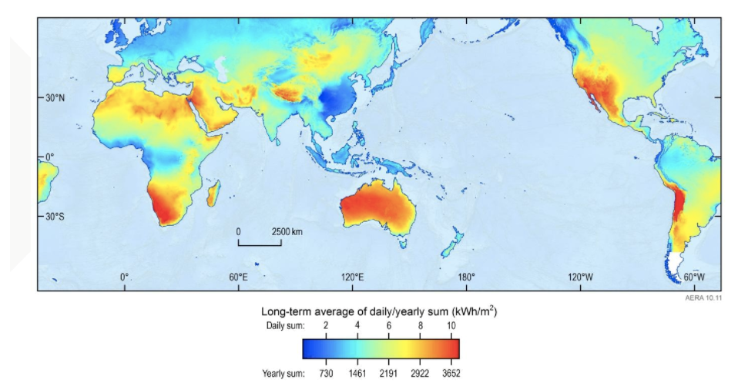
However, Australia’s Energy Resource Assessment recognises that other forms of renewables will be part of Australia’s future energy mix.
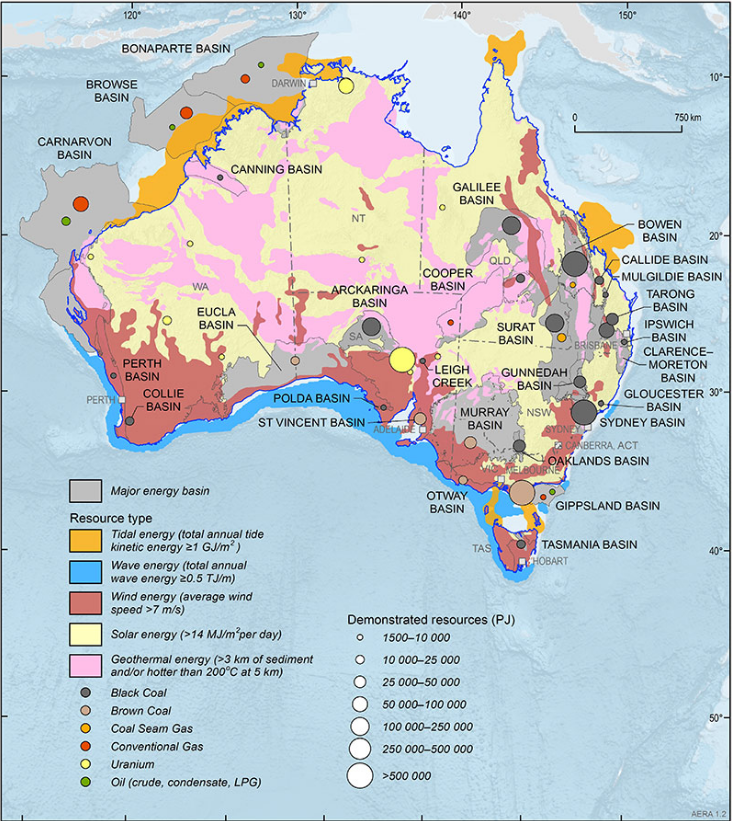
The above chart does not include hydro opportunities which the ANU suggests have a combined energy storage potential of more than 15,000 GWh, which is 35 times larger than required to support a 100 per cent renewable electricity grid in Australia.
Rethinking transmission planning
What is evident around the world is that these new sources of generation have different characteristics to the dominant energy sources of the last century. Ms Chang suggests that 20th century approaches to transmission planning are not suited to address 21st century challenges, particularly with a more diverse energy mix. On her North American experience, Ms Chang sees a need globally “… to pay close attention to the transformation of our power system, the risks and potentially very high costs associated with challenging and extreme market conditions, and the ability of a more robust, flexible transmission infrastructure to reduce the costs and risks of delivering power to consumers.”[1]
One of the Finkel Review’s key recommendations was for greater strategic planning of transmission infrastructure in Australia, including a new planning mechanism to allow the efficient development and connection of new Renewable Energy Zones. These zones are gaining international prominence as a transmission planning tool to enable the “scale up” of penetration of solar, wind, and other resources on the grid. Here in Australia, there are already multiple areas where there are well-advanced plans for significant renewable generation investment but the process for delivering the shared network they really need is painfully slow.
Rethinking Transmission value
Ms Chang notes this transition toward a more diverse mix of renewable generation includes a rethink of how transmission interconnection is valued and planned because the “drivers” of value for interconnection are changing with the transforming energy mix. Investment decisions have usually been made in the context of traditional drivers of serving growing load, reducing congestion and facilitating large generation export within and between regions.
A re-emphasis of placing value on interconnection to deliver benefits from a diverse energy mix has been a hallmark of change in Europe over the last decade, as recognised by the Finkel Review which noted some jurisdictions like Germany, the United Kingdom and Texas, USA, are making a “strategic policy choice” to facilitate large scale renewable energy generation.
Justifying transmission investment for system security purposes (particularly interconnectors) and recovering cost will require further examination. These issues are expected to be addressed by both the Australian Energy Regulator in its impending review of its 2010 guidelines for the application of the Regulatory Investment Test for Transmission, and by the AEMC when considering potential cost recovery options as part of its review into the Co-ordination of generation and transmission investment.
[1] Pfeifenberger, Chang, Sheilendranath, “Toward More Effective Transmission Planning: Addressing the Costs and Risks of an Insufficiently Flexibly Electricity Grid,” prepared for WIRES, April 2015.

